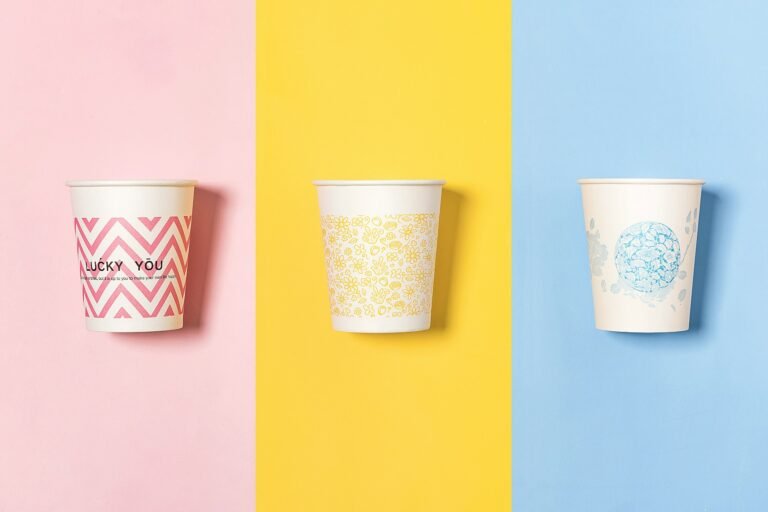
If you’re looking for a natural way to achieve a sun-kissed glow without relying on harsh chemicals, carrot gel for tanning might be your new go-to product. Packed with beta-carotene, antioxidants, and nourishing oils, carrot gel not only helps enhance your tan but also supports overall skin health. Whether you prefer sunbathing outdoors or using a tanning bed, using carrot gel properly can make a noticeable difference in both your tan’s depth and your skin’s hydration.
However, like any skincare product, achieving the best results with carrot gel requires knowing how to use it correctly—and safely. In this guide, we’ll walk you through everything you need to know about applying carrot gel for tanning, how it works, and the essential precautions to take for a healthy, even glow.
What Is Carrot Gel for Tanning?
Carrot gel for tanning is a natural skincare product designed to enhance and accelerate the tanning process while nourishing the skin. It typically contains carrot extract or carrot oil, which is rich in beta-carotene, a powerful antioxidant and a precursor to vitamin A. Beta-carotene supports melanin production—the pigment responsible for skin color—which can help deepen your tan when your skin is exposed to sunlight or UV rays.
Unlike conventional tanning oils that may include synthetic bronzers or harsh chemicals, carrot gel for tanning is often favored for its plant-based formulation. Along with beta-carotene, it usually contains moisturizing ingredients like aloe vera, shea butter, or vitamin E, making it suitable for those who want a natural glow without compromising skin health.
The gel texture allows for easy application and quick absorption, leaving the skin feeling soft and hydrated—not greasy. It can be used before sun exposure to promote a golden tan or as part of your after-sun routine to soothe and condition the skin.
In essence, carrot gel for tanning offers a gentler, skin-friendly alternative to traditional tanning products—making it ideal for those seeking a natural, radiant tan with added skin benefits.
Why Choose Carrot Gel for Tanning?
Choosing carrot gel for tanning offers a unique combination of skin care and sun-kissed radiance—making it a popular option for those seeking a more natural approach to tanning. Unlike conventional tanning lotions that often rely on synthetic bronzers or drying alcohol-based formulas, carrot gel uses the power of beta-carotene, vitamin A, and other plant-based nutrients to enhance your tan while deeply nourishing your skin.
One of the biggest reasons people prefer carrot gel is its dual functionality: it helps you tan faster and more evenly while acting as a moisturizer and antioxidant treatment. Beta-carotene naturally supports melanin production, giving your skin a warm, golden glow with less exposure to UV rays. At the same time, ingredients like carrot oil, aloe vera, and vitamin E work to keep the skin hydrated, smooth, and protected from environmental stressors.
Another benefit is its lightweight, non-greasy texture, which absorbs quickly and doesn’t clog pores—making it suitable for both face and body. Whether you’re tanning at the beach, in your backyard, or using a sunbed, carrot gel provides a safer and more skin-friendly path to achieving that perfect summer glow.
How Carrot Gel for Tanning Works
Carrot gel for tanning works by using natural ingredients—primarily beta-carotene—to enhance your skin’s ability to tan while providing nourishment and protection. Beta-carotene is a powerful antioxidant found in carrots that supports melanin production in the skin. Melanin is the pigment responsible for skin color and acts as a natural defense against UV radiation. When you expose your skin to the sun or tanning beds, beta-carotene helps stimulate melanin activity, encouraging a faster and deeper tan.
In addition to beta-carotene, carrot gel often contains carrot oil, vitamin A, vitamin E, and sometimes natural plant extracts like aloe vera. These ingredients work together to hydrate the skin, reduce inflammation, and prevent dryness or peeling, which are common side effects of sun exposure. This combination ensures that your skin not only tans more efficiently but also stays healthy and supple.
Unlike artificial bronzers, carrot gel doesn’t tint the skin instantly—it enhances your natural tanning process over time. With regular use and proper sun protection, carrot gel for tanning helps you achieve a gradual, long-lasting golden glow while minimizing skin damage from UV exposure.
Step-by-Step Guide: Using Carrot Gel for Tanning Safely
Using carrot gel for tanning can be a great way to achieve a natural, radiant tan—if used correctly. Follow this step-by-step guide to ensure you get the best results while keeping your skin safe and healthy.
Step 1: Do a Patch Test
Before applying carrot gel all over your body, test it on a small area of skin to rule out any allergic reactions or sensitivities. Wait 24 hours and check for redness, itching, or irritation.
Step 2: Exfoliate Your Skin
Start with clean, exfoliated skin. Gently scrub away dead skin cells using a loofah or natural exfoliator. This helps the gel absorb evenly and prevents patchy tanning.
Step 3: Apply Sunscreen First
Carrot gel is not a substitute for SPF. Apply a broad-spectrum sunscreen (SPF 30 or higher) to protect your skin from UV damage. Let the sunscreen absorb for a few minutes before applying the gel.
Step 4: Apply Carrot Gel Evenly
Squeeze a small amount of carrot gel for tanning into your palm and massage it evenly into your skin using circular motions. Focus on areas where you want a deeper tan. Avoid contact with eyes and broken skin.
Step 5: Limit Sun Exposure Initially
Start with short sun sessions—15 to 30 minutes—to see how your skin responds. Gradually increase exposure as your tan builds. Reapply gel if you’re spending extended time in the sun or after swimming.
Step 6: Moisturize After Sun Exposure
After tanning, rinse off any remaining gel and apply a gentle, hydrating moisturizer or after-sun lotion. This helps lock in moisture and prolong your tan.
Step 7: Use Consistently but Cautiously
Use carrot gel regularly during your tanning routine, but give your skin rest days and monitor for any irritation or sensitivity.
How Often Should You Use Carrot Gel for Tanning?
The frequency of using carrot gel for tanning depends on your skin type, tanning goals, and how often you’re exposed to the sun or UV light. Generally, it’s safe and effective to use carrot gel 2 to 4 times per week during your tanning routine.
For beginners or those with sensitive skin, start by applying the gel every other day before sun exposure to allow your skin to adjust and avoid any irritation. Once your skin becomes accustomed to the product and begins to tan evenly, you can increase the frequency as needed—especially if you’re tanning outdoors or using a sunbed regularly.
It’s important to remember that carrot gel enhances your natural tan over time, so consistent use paired with controlled sun exposure will give the best results. However, overuse won’t speed up the tanning process and may lead to clogged pores or skin imbalance.
On days when you’re not tanning, consider giving your skin a break and focus on hydration and sun protection. If your skin feels dry or overexposed, skip the gel and apply a nourishing moisturizer or aloe vera gel to restore balance.
In short, use carrot gel for tanning consistently but mindfully, and always listen to your skin’s needs.
Safety Tips and Precautions When Using Carrot Gel for Tanning
While carrot gel for tanning is generally considered safe and natural, it’s important to follow proper safety guidelines to protect your skin and ensure effective results. Here are key tips and precautions to keep in mind:
1. Always Use Sunscreen
Carrot gel does not replace sunscreen. It may enhance your tan, but it does not provide adequate protection against harmful UVA and UVB rays. Always apply a broad-spectrum sunscreen (SPF 30 or higher) before using carrot gel outdoors.
2. Perform a Patch Test First
Before applying carrot gel all over your body, test it on a small area of skin—especially if you have sensitive or allergy-prone skin. Wait 24 hours to check for any signs of irritation, redness, or itching.
3. Avoid Overexposure to Sunlight
Even with carrot gel and sunscreen, limit your time in direct sunlight—especially between 10 a.m. and 4 p.m., when UV rays are strongest. Prolonged exposure can lead to sunburn, premature aging, and skin damage.
4. Keep Away from Eyes and Mucous Membranes
Carrot gel is for external use only. Avoid applying it near your eyes, mouth, or on broken or irritated skin. If contact occurs, rinse thoroughly with water.
5. Use Moderately and Evenly
Apply a thin, even layer of carrot gel to avoid clogged pores or patchy results. Using more product won’t speed up the tanning process, and could lead to uneven skin tone or buildup.
6. Store in a Cool, Dry Place
Heat and sunlight can degrade the natural ingredients in carrot gel. Store it in a cool, shaded area to preserve its effectiveness and shelf life.
7. Stay Hydrated and Moisturize
Tanning—especially under the sun—can dehydrate your skin. Drink plenty of water and moisturize regularly to maintain healthy, glowing skin.
Expert Opinions and Dermatologist Insight on Carrot Gel for Tanning
When it comes to using carrot gel for tanning, many skincare professionals and dermatologists agree that its natural ingredients can offer benefits—if used correctly and cautiously.
1. Dermatologists on Beta-Carotene and Skin Health
Experts highlight beta-carotene, the star ingredient in carrot gel, as a potent antioxidant that supports skin health. According to dermatologists, beta-carotene can enhance melanin production when combined with controlled sun exposure, helping users achieve a gradual, golden tan. However, they emphasize that it should not be used as a replacement for sun protection, as it doesn’t block UV rays.
“Carrot oil and beta-carotene may support tanning by stimulating melanin, but they don’t prevent sunburn. A broad-spectrum SPF is still essential,” says Dr. Leila James, a board-certified dermatologist.
2. Skin Experts on Moisturizing Benefits
Skincare experts praise carrot gel for tanning for its hydrating and soothing properties, often infused with aloe vera, vitamin E, and essential oils. These ingredients help reduce inflammation, calm sun-exposed skin, and prevent dryness or peeling, which are common during tanning.
“It’s a smart option for those looking to tan naturally while also treating their skin with antioxidants and hydration,” notes holistic skincare expert Karen Field.
3. Warnings About Overuse and Misuse
While experts support carrot gel as a safer alternative to synthetic bronzers, they caution against overuse or relying on it for sun protection. Some dermatologists also advise people with sensitive or acne-prone skin to test the product carefully, as oils in the gel could clog pores for some individuals.
Common Mistakes to Avoid When Using Carrot Gel for Tanning
While carrot gel for tanning can help you achieve a healthy, golden glow, using it improperly can lead to poor results or even skin irritation. To make the most of your tanning routine, avoid these common mistakes:
1. Skipping Sunscreen
One of the biggest mistakes is assuming carrot gel offers sun protection. Carrot gel does not contain SPF, and using it alone can leave your skin vulnerable to sunburn and long-term damage. Always apply a broad-spectrum sunscreen underneath or alongside the gel.
2. Applying Too Much Product
Using more carrot gel won’t accelerate your tan. In fact, over-applying can clog pores, cause breakouts, or lead to an uneven finish. A thin, even layer is all you need for effective results.
3. Not Exfoliating Before Application
Dead skin cells can create a barrier that prevents even absorption. Skipping exfoliation can lead to patchy or blotchy tanning. Always cleanse and exfoliate your skin before applying the gel.
4. Tanning During Peak Sun Hours
Applying carrot gel and tanning during peak UV hours (10 a.m. to 4 p.m.) increases your risk of sunburn and skin damage. Opt for early morning or late afternoon sun exposure instead.
5. Ignoring Patch Tests
If you have sensitive skin or allergies, using carrot gel without a patch test can result in irritation or allergic reactions. Always test a small area 24 hours before full application.
6. Using It Without Moisturizing After Sun
Post-tanning skin needs care. Failing to moisturize after sun exposure can lead to dryness, flaking, or premature fading of your tan. Use a gentle after-sun lotion or aloe vera gel to lock in moisture.
7. Expecting Instant Results
Carrot gel supports a gradual tan—it doesn’t work like self-tanners or bronzers. Expect a natural, buildable glow over time, especially when paired with consistent sun exposure.
Achieve a Healthy Glow with Carrot Gel for Tanning
Achieving a radiant, sun-kissed glow doesn’t have to come at the cost of your skin’s health. With the right approach, carrot gel for tanning offers a natural and nourishing way to enhance your tan while keeping your skin hydrated, protected, and glowing. Its rich blend of beta-carotene, antioxidants, and plant-based oils works in harmony with sun exposure to gradually deepen your color and support skin vitality.
However, the key to safe and effective tanning lies in balance and consistency. Always pair carrot gel with a quality sunscreen, avoid overexposure to the sun, and follow a good skincare routine before and after tanning. Whether you’re a beginner or an experienced tanner, incorporating carrot gel into your regimen can help you achieve a healthy, long-lasting glow—naturally and confidently.







